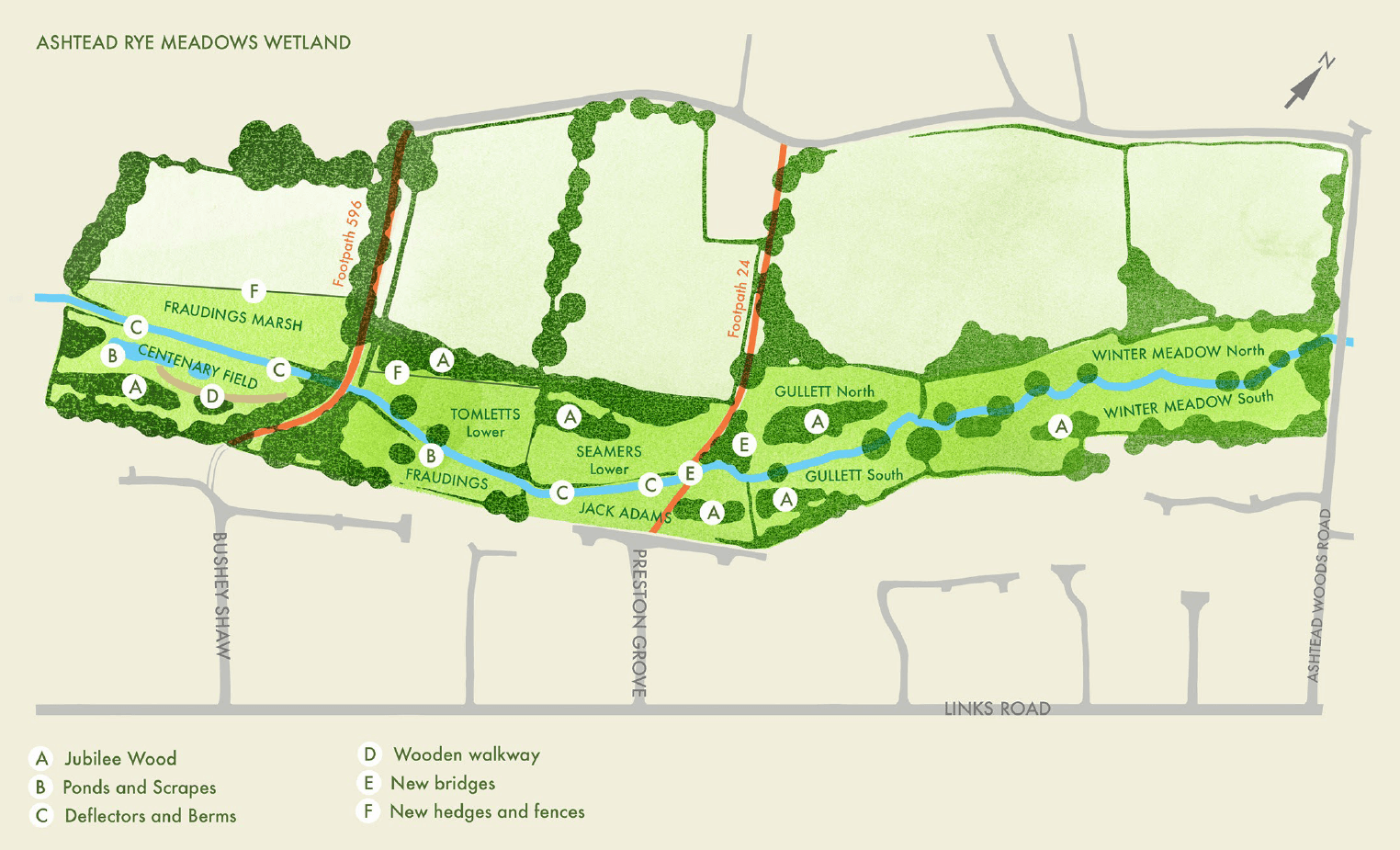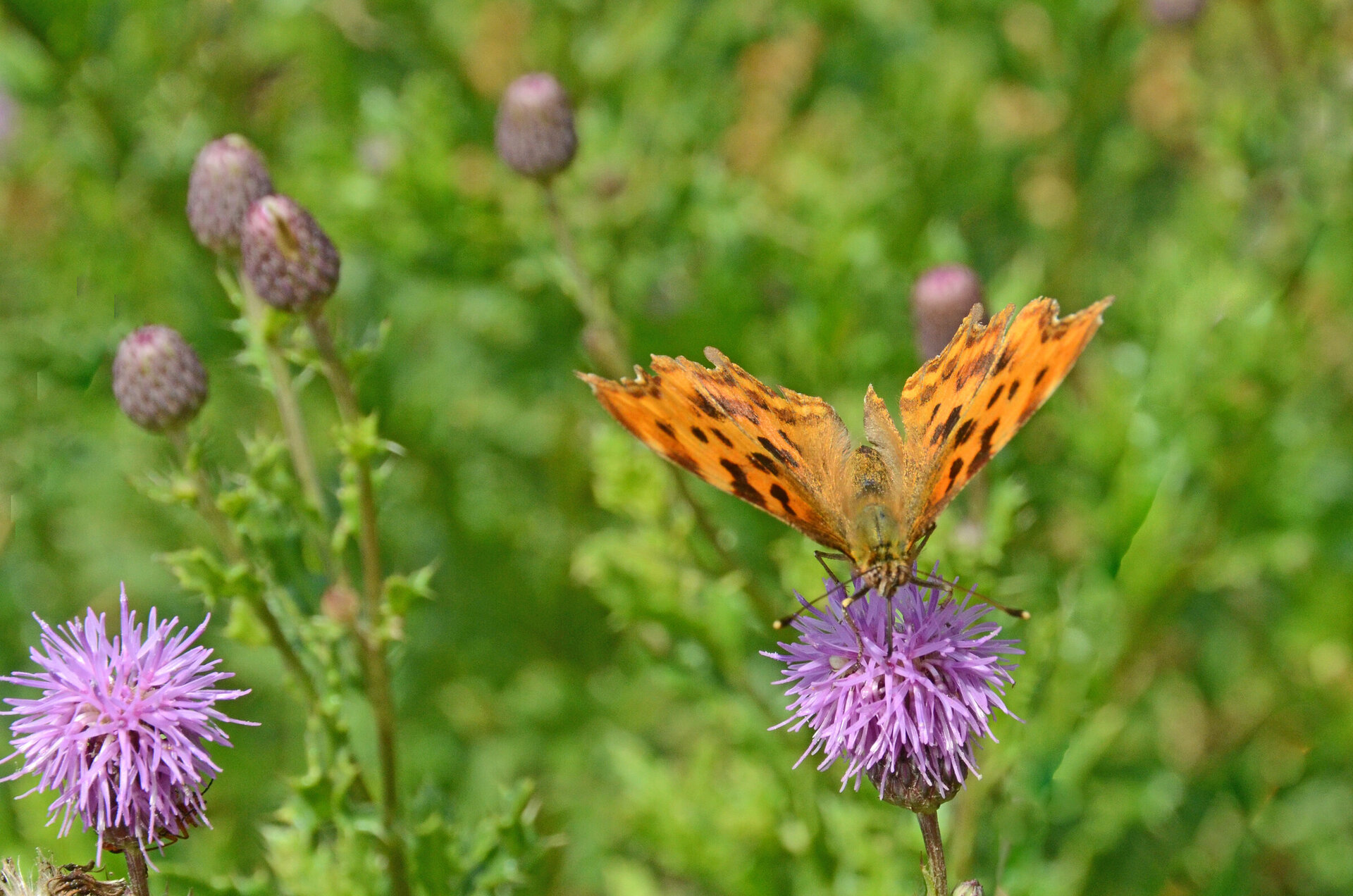Developing my vision
In 1988 an area of approximately 48 acres of land adjacent to Ashtead Woods Road was acquired by my husband and myself from the estate of the late Lord Barnby, who had expressed the strong desire that the land be retained in single ownership to preserve the character of an area of land which, with the exception of some peripheral building, has remained little changed for many centuries. The land is bisected by the Rye Brook, which is designated a "main river" and is a tributary of the River Mole.
Over the last 24 years some of the land, mainly in the upper area, has been used for low intensity grazing for horses. The income from this has contributed to the cost of the general maintenance of the whole area and, inter alia, the clearing of natural and man-made debris from the environs of the Rye, tree felling and clearance where necessary for safety reasons, and the cutting and preservation of hedges. In addition significant work has been undertaken over the years in keeping clear the two footpaths which traverse the land from Preston Grove and Fairholme Crescent, giving direct access to Ashtead Common. This work has also included the building and restoration of stiles.
The Vision
Having managed the land for almost a quarter of a century, I would like to enhance for the long term benefit of the environment and the village of Ashtead this wildlife corridor. Over the past couple of years I have been developing my vision with the assistance of:
The Community Foundation for Surrey
Thames Water
The Environment Agency
Surrey Wildlife Trust
The Woodland Trust
The Barnby Trust
The Thomas Flack Fund
Helen Cocker and Conor Morrow of the Lower Mole Countryside Management Project
Mole Valley District Council
Chris Townsend, Surrey County Councillor
Ashtead Rotary
Nigel Bond (Chairman), David Baker, Rod Shaw, Peter Ross and Peter Williams – Committee Members
Stephanie Weinmann, Landscape architect
Plus many more regular and enthusiastic volunteers now numbering 25.
Daphne Burnett


Proposed Scheme
The plan includes the following:-
- reshaping the river channel
- recreating meanders
- developing ponds and scrapes
- generally creating new habitats for important species
- planting hedging and trees indigenous to the area to enhance nesting sites for birds
- light grazing of horses to encourage wild flower meadows
- ongoing maintenance
- encouraging other groups and specialist societies to visit and record their findings
- Planting a Jubilee Wood
